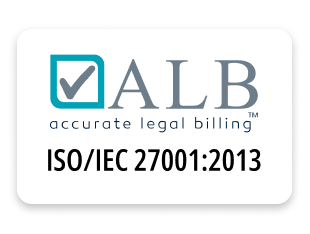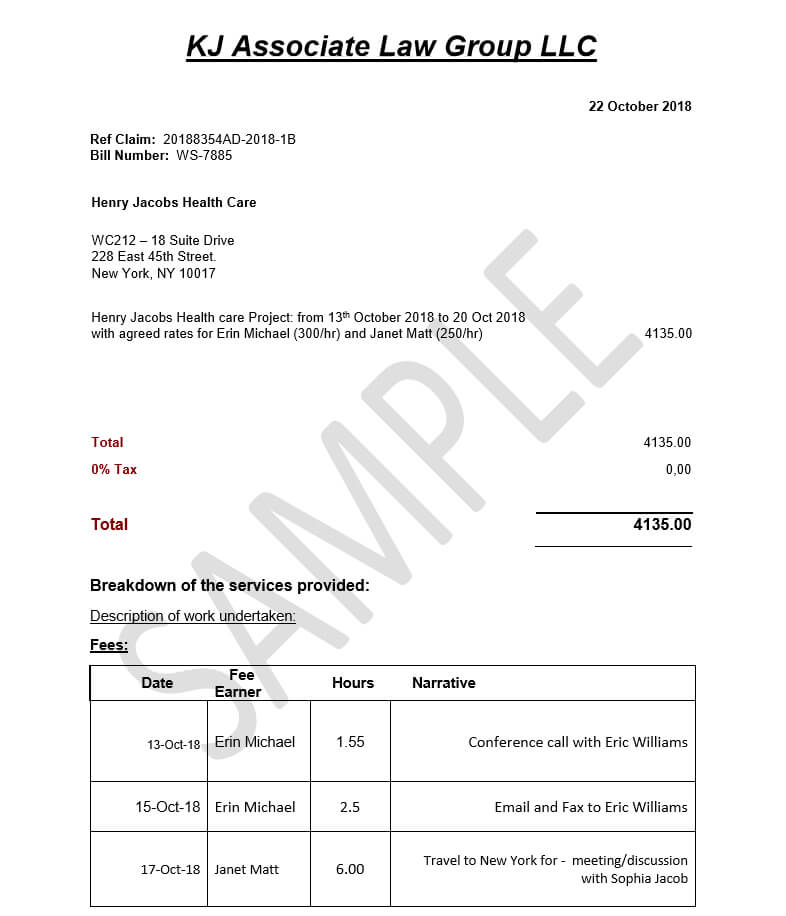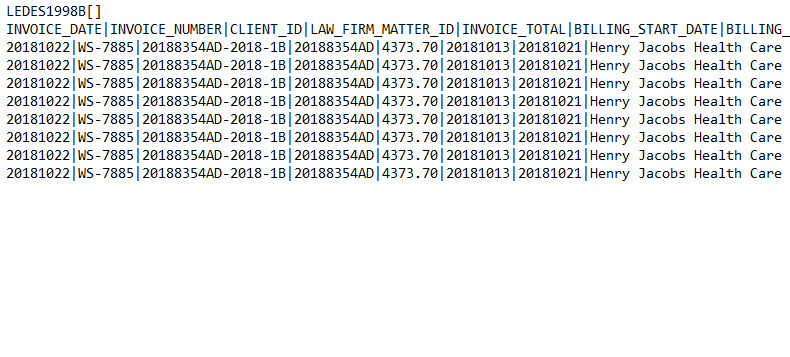
How Law Firms Can Reduce e-Billing Rejections
For law firms, especially those working with corporate clients or insurance companies, electronic billing (e-billing) is now a standard part of the legal business. It is fast, trackable, and integrated into client systems, but it also brings its own set of challenges. And if you have ever had an invoice rejected without knowing exactly why, you are not alone.
e-Billing rejections are one of those behind-the-scenes issues that can quietly eat up a lot of your firm’s time and energy, not to mention impact your cash flow and client relationships. The worst part? Many of these rejections are completely avoidable.
In this blog, we will explain why e-billing rejections happen, the common mistakes that cause them, and what you can do today to stop your invoices from being rejected. Let us get started.
What Exactly Is an e-Billing Rejection?
An e-billing rejection is when a client’s system, or their legal operations team, pushes back an invoice you have submitted because it does not meet their billing rules.
Now, these are not just casual preferences. Most clients (especially large organizations, insurance carriers, or managed legal service providers) have detailed billing guidelines that law firms are expected to follow exactly. And as e-billing platforms are automated, even small issues like a time entry being too vague, or the wrong task code being used, can trigger a rejection.
It is not always personal, but it is serious.
And when your invoice is rejected, your firm does not get paid until it is fixed and resubmitted, which could take days or even weeks, depending on the complexity.
Why Do Billing Rejections Matter to Your Firm?
When a bill gets rejected, initially, it might feel like just another task on the to-do list. But over time, these issues can create a much bigger problem and can cost your firm in several ways, such as:
• Lost time: Fixing and resubmitting invoices takes valuable admin hours away from actual legal work.
• Delayed payments: Even if the issue is minor, your payment is on hold until the invoice is corrected and approved.
• Frustrated clients: Clients expect law firms to understand and follow their rules. Repeated billing errors can hurt the relationship.
• Team burnout: The back-and-forth with billing platforms and client contacts adds unnecessary stress to your legal support team.
• Damaged reputation: A high rejection rate might make clients question your firm's internal controls or professionalism.
Simply put: the fewer billing issues your firm has, the faster you get paid, and the better your working relationship with clients becomes.
What Are Some Common Reasons Law Firms Face e-Billing Rejections?
It is not usually one big mistake that causes invoices to get rejected. More often, it is a combination of small oversights or rule violations that slip through the cracks. Here are some of the most common ones:
• Billing with the Wrong Timekeeper or Rates: If someone not approved to work on a matter submits time, or if the rate used does not match the agreed-upon rate for that person, the invoice could be rejected. Some clients are strict about who can work on their cases and how much they can charge.
• Duplicate Invoices or Resubmission Errors: If you accidentally submit the same invoice twice or try to resubmit an invoice without properly correcting the issue, that can also lead to rejection. Some platforms will block duplicates even if you slightly change the invoice number or edit an entry.
• Not Following the Client’s Billing Guidelines: Every client has their own set of rules for how they want to be billed. Some might not allow billing for internal meetings. Others might not accept certain time increments (for example, they only allow .1-hour entries, not .25). If your invoice does not follow those rules exactly, it is likely to get flagged.
• Using the Wrong Codes (UTBMS or LEDES): If you are using e-billing software, you are likely dealing with UTBMS codes and LEDES files. These codes tell the client what kind of work was done. If the wrong code is used, or if a required field is left blank or formatted incorrectly, the invoice might be automatically rejected by the system.
• Vague or Block-Billed Time Entries: Entries like “Worked on matter” or “Drafted documents” without specifics can trigger a rejection, especially if your client uses automated flagging tools. And if you lump several tasks into one line item, like “Reviewed emails, prepared memo, and had a call with client – 4.5 hours,” that is known as block billing, and it is a red flag for most clients.
The above are only a few reasons. So how can law firms reduce e-billing rejections?
Let us take a look.
How Can Law Firms Reduce e-Billing Rejections?
In most cases, e-billing rejections are preventable. Below are a few tips you can consider:
• Really Know Your Client’s Billing Rules
This might seem obvious, but a lot of issues happen simply because the attorney or timekeeper did not know the billing rules for that client. Make sure your firm has:
• A central place where billing guidelines for each client are stored and updated
• Billing rules that are shared with all team members (especially new associates or contract attorneys)
• A habit of reviewing the rules before time is entered or before invoices are submitted
Even just knowing that a client does not allow billing for travel time can save your team hours of adjustments later.
• Train Timekeepers on Billing Best Practices
Attorneys are great at practicing law, but not always great at billing. Make sure your team is trained on things like:
• Writing clear, specific time entries
• Avoiding vague language like “case review” or “drafting” without context
• Knowing what tasks are billable (and what are not) for each client
• Breaking up block billing into separate line items with time allocated
A few short internal training sessions each year can make a big difference.
• Set Up a Pre-Bill Review Process
Before an invoice ever goes out the door, someone should review it for:
• Compliance with client rules
• Consistency of codes, time entries, and rates
• Formatting issues in the LEDES file or e-billing platform
This can be done by your billing team, a designated admin, or even through automation tools, but having that extra review step can catch 90% of errors.
• Use Technology That Helps
If you are relying on manual billing systems or outdated software, it might be time to upgrade. There are tools available that:
• Flag time entries that do not match client rules
• Prevent submission of invoices with missing or incorrect codes
• Automatically apply UTBMS codes and correct time formats
• Track rejection reasons and help identify trends
AI-powered legal e-billing software can help take some of the guesswork out of compliance, but it still needs to be used properly.
• Track Rejections and Learn from Them
Keep a running log of:
• Which clients are rejecting bills most often
• What are the top reasons for those rejections
• Which timekeepers are linked to the highest error rates
Use this data to update your training, fine-tune your internal processes, and flag risk areas early.
Conclusion
Nobody likes having invoices rejected. But unfortunately, it causes delays, creates stress, and puts unnecessary strain on the billing process. But with a few process improvements, some staff training, and the right technology in place, your law firm can significantly reduce e-billing rejections, get paid faster, and increase cash flow.
If your team is spending too much time fixing rejected invoices or struggling with e-billing platforms, we can help you build a billing process that works smoothly from the start. Let us talk about how you can cut down on delays, improve accuracy, and build stronger trust with your clients.

.png)



